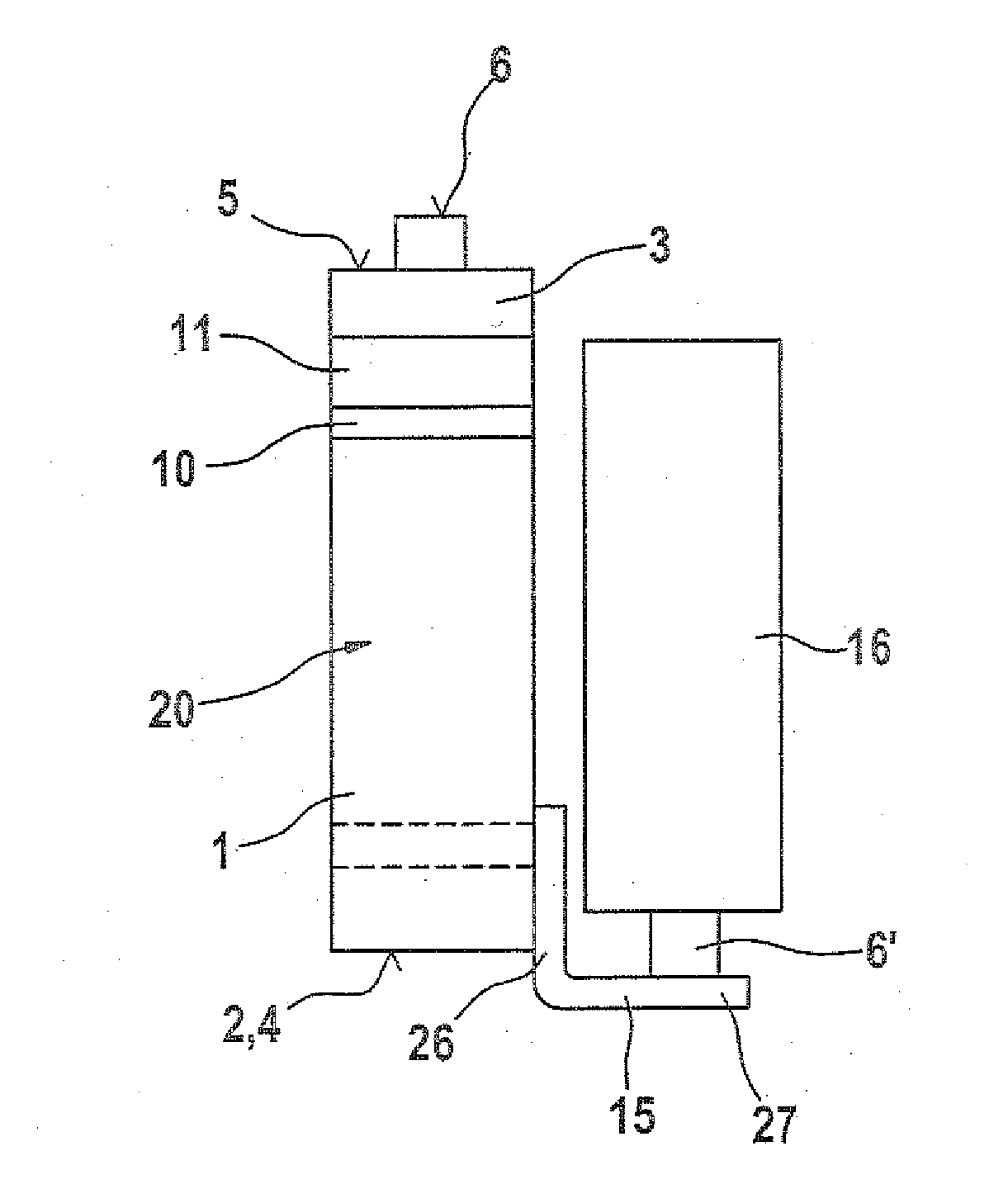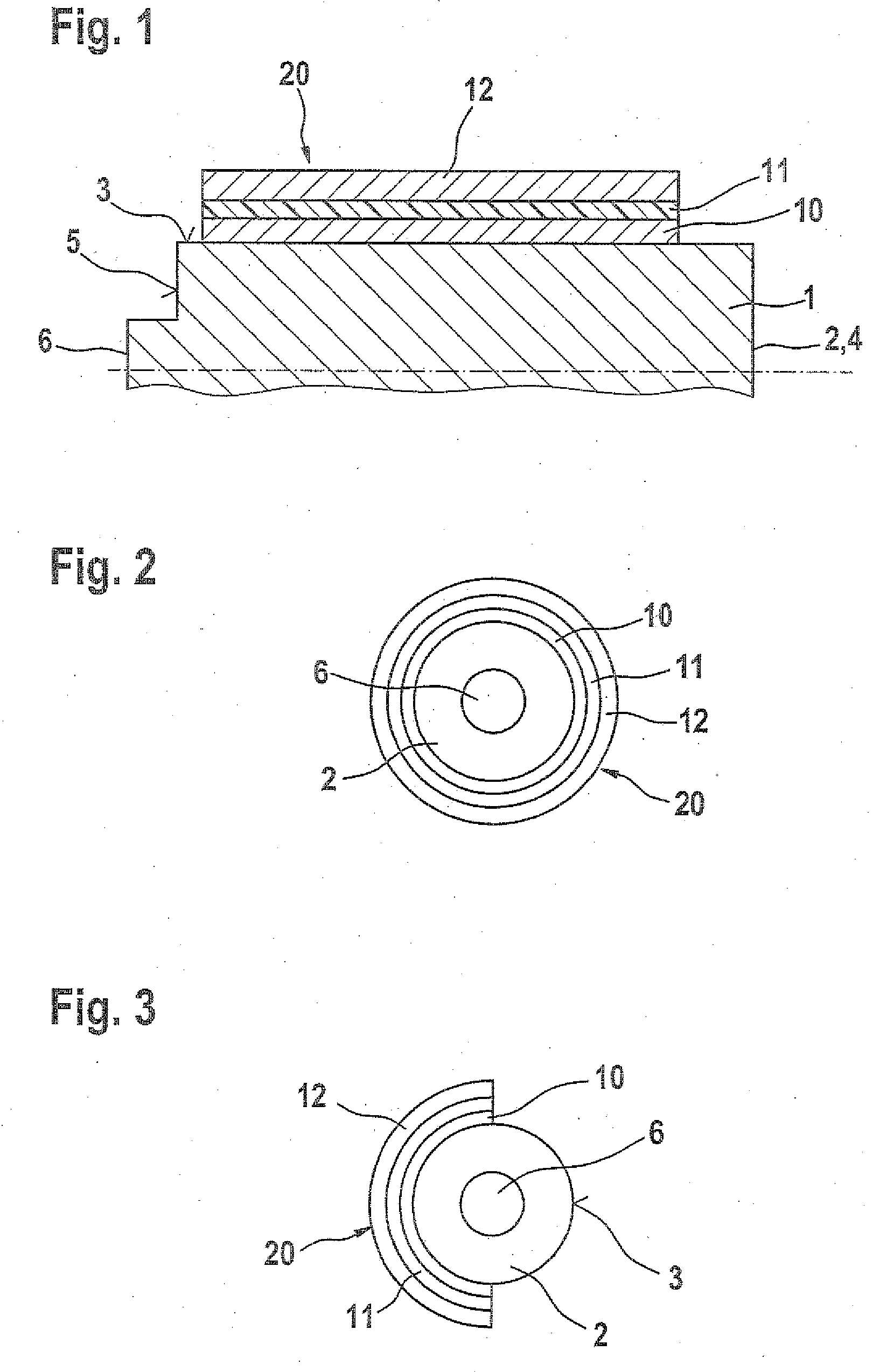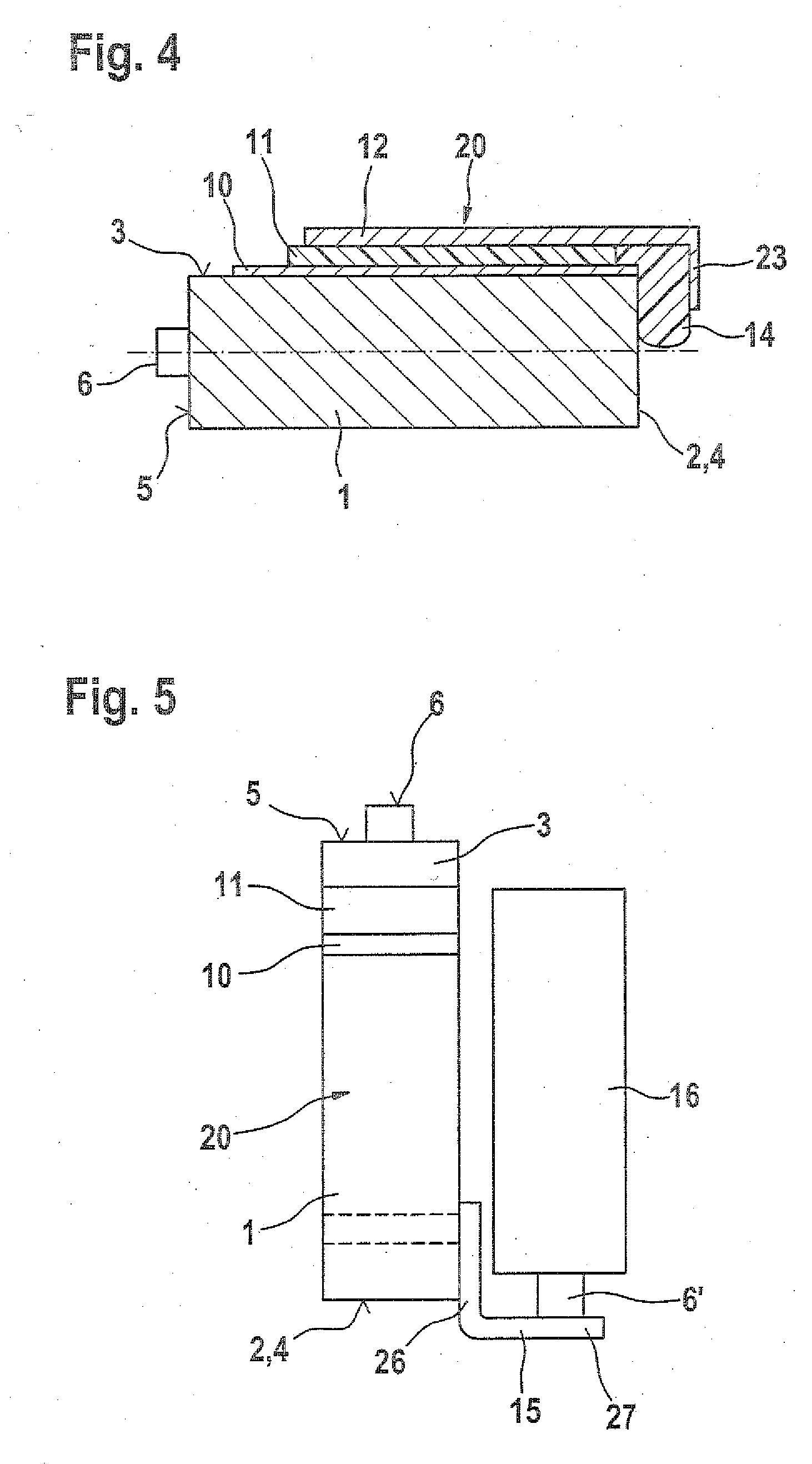Rechargeable battery and battery pack
- Summary
- Abstract
- Description
- Claims
- Application Information
AI Technical Summary
Benefits of technology
Problems solved by technology
Method used
Image
Examples
Embodiment Construction
[0021]A rechargeable battery, also known as an accumulator or secondary cell, is a storage means for electrical energy, usually on the basis of an electrochemical system. Examples of known systems are nickel-cadmium, nickel-metal hydride, lithium-ion, or lithium-polymer batteries, which contain a galvanic cell that after discharging can be recharged. For achieving a defined voltage, these cells are packed and connected to one another to make a battery pack. The individual cells are all of the same type. The desired voltage or rated voltage of the battery pack is the sum of the series-connected cells.
[0022]Each rechargeable battery includes a galvanic cell 1, schematically shown in FIG. 1, which is surrounded in a known manner by a cell cup 2. The cell 1 has an elongated cylindrical shape, with a jacket face 3 and two bases. A first fiat base 4 typically forms the negative pole. A second base 5, diametrically opposite the first base 4, likewise has a flat side, which forms the positi...
PUM
 Login to View More
Login to View More Abstract
Description
Claims
Application Information
 Login to View More
Login to View More - R&D
- Intellectual Property
- Life Sciences
- Materials
- Tech Scout
- Unparalleled Data Quality
- Higher Quality Content
- 60% Fewer Hallucinations
Browse by: Latest US Patents, China's latest patents, Technical Efficacy Thesaurus, Application Domain, Technology Topic, Popular Technical Reports.
© 2025 PatSnap. All rights reserved.Legal|Privacy policy|Modern Slavery Act Transparency Statement|Sitemap|About US| Contact US: help@patsnap.com



